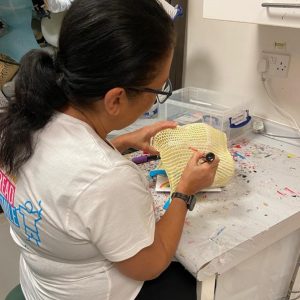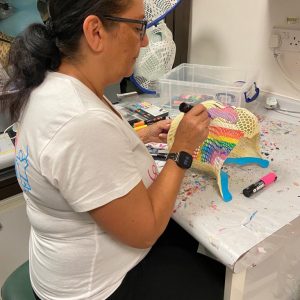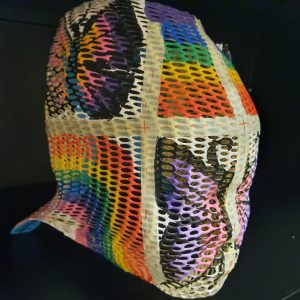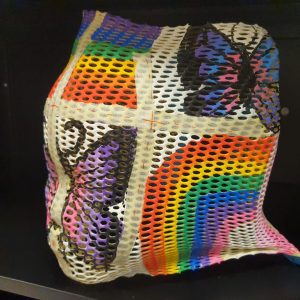We are so proud to be able to support children and teenagers undergoing treatment at the new Proton Beam Therapy Centre at University College Hospital, London (UCLH).
The centre, which saw its first patients in December 2021, will offer world-leading proton beam therapy to patients of all ages, targeting tumours precisely while reducing the long-term side effects of treatment.
Children and young people undergoing radiotherapy treatment for head, brain or neck cancers are required to wear a mask or mould so the treatment can be delivered as precisely as possible. This can be an incredibly frightening experience. Spread a Smile has been painting radiotherapy masks at UCLH since February 2018 and since this time, our Head of Art, Marina, has painted hundreds of masks. The masks patients wear for proton treatment are slightly different.
In December, Marina was invited into UCLH to paint her first trial m ask and we are so proud to be working in partnership with the hospital to be able to provide masks for all child and adolescent patients.
As with all Spread a Smile’s work, each mask is completely personalized. Marina takes a full brief and brings the child’s ideas to life on their mask. The trial proton mask she painted in December, which you can see pictured here, features rainbows and butterflies
Laura Walter, Director of Services at Spread a Smile said: “All those little details are so important when it comes to painting the masks. Marina always ensures she incorporates any specific requests, that favourite colours are included for example. This gives patients as much control over their situation as possible, helping to make the experience less frightening and more positive.
“We are proud to be working with our partner UCLH to support their patients going through proton beam therapy treatment. The Play Specialists put in many hours so children can cope with their treatment effectively and being able to deliver hand-painted personalised masks helps to further reduce their anxieties. It helps to make a very clinical environment more child friendly.”





